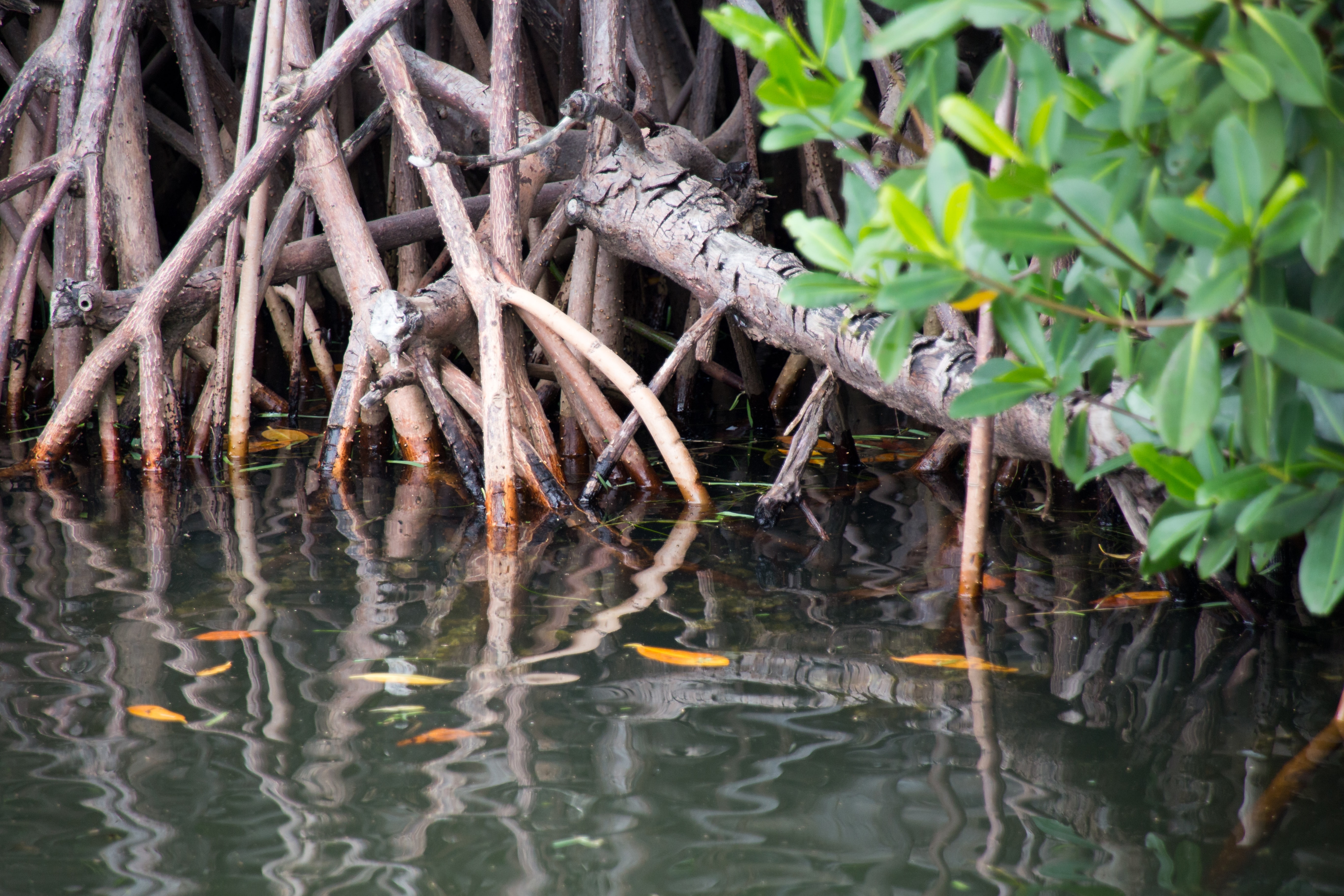Helping the Everglades’ mangrove forests survive climate change
August 10, 2021

By Noelle Chantarasap
Florida, the “Sunshine State,” is perhaps best known for Disney World attractions and party scenes. But another, lesser known treasure is Everglades National Park, an expanse of endless greenery densely cluttered with oddly shaped trees and sleepy, meandering waters. Just fifteen minutes from the Miami suburb Florida City, adventurers can find peaceful refuge from their busy lives in this subtropical wonderland, which, according to the Natural Resources Conservation Service, is home to the largest mangrove ecosystem in the western hemisphere.
Three mangrove species can be found in this riparian area of coastal intertidal zones, where the river meets the sea: the red mangrove (Rhizophora mangle), the black mangrove (Avicennia germinans), and the white mangrove (Laguncularia racemosa). These species form their own carbon-intensive, biologically diverse ecosystem. Their tentacle-like roots prop up from the soil like wooden domes and serve as a nursery ground for several species of juvenile fish and other marine animals.
Mangroves as ecosystem regulators
Serving as one of the world’s largest carbon sinks, mangroves provide multiple ecosystem services for the surrounding environment. They filter water and air; prevent soil erosion; provide food and timber; and serve as coastal protections from storm surges, high waves, and sea level rise, just to name a few.
The good news is that Everglades National Park is legally protected on both state and federal levels with legislation that regulates mangrove trimming and removal. Furthermore, NASA’s satellite data shows that the rate of mangrove loss has actually plummeted in the last 20 years, most likely from conservation efforts. Are we out of the woods yet?
Unfortunately, the answer is, “No.” Climate change impacts, such as rising sea level, changes in tides and currents, and severe weather and drought, could still potentially wipe out scores of mangrove forests along the coastline, and undo decades of conservation efforts. The low elevation of the Everglades is especially vulnerable to sea level rise and tropical storms associated with climate change. Mangrove mortality from sea level rise is inevitable if our global collective efforts fail to limit global temperature rise to less than 2°C.
In case of sea level rise, conservation ecologists believe that mangroves could be saved if they migrate landward. Since mangroves’ fruits, seeds, and seedlings are buoyant in nature, they are able to float around in the watery area of the riparian zone for over a year before taking root. Once the seedling spies its place to set up shop, it turns vertically and plants itself in the soil with roots pointing downward. However, landward migration is difficult in some areas due to limited space from urbanization and agricultural areas, leaving mangrove managers stuck between a rock and a hard place.

Increasing mangrove climate resilience
However, there is some hope for mangrove survival if conservationists and managers plan effective climate change adaptation strategies and incorporate them into existing conservation plans to get the most bang for the buck. As an Online MNR student, I have been learning about some of these strategies in Dr. Paul Wagner’s Climate Adaptation course.
There are a number of adaptation strategies that could be used to sustain the mangrove population and increase overall ecosystem resilience in southern Florida. First, managers should reduce non-climate stressors, such as habitat fragmentation, pollution, and mangrove forest destruction, while enhancing resilience indicators, such as soil accretion, sedimentation rate, productivity rate, subsidence rate, dissolved oxygen level, mangrove height, salinity, water color, soil carbon storage, seedling quality and dispersion, and rate of erosion.
Secondly, managers should integrate climate adaptation plans into existing programs rather than reinvent the wheel. The plans should be forward looking, anticipating new climate challenges. When all else fails, translocation or realignment of mangrove forests to upland refugia may be the key to protect shoreline mangroves from sea level rise. With careful planning and strategizing, urbanized and agricultural areas would no longer be a problem if land use planning tools such as rolling easements and transfer of development rights were used. Lastly, managers should develop a set of performance indicators and monitoring plans to be able to keep track of the project’s progress.
Climate change impact has its uncertainties, as all projections of future scenarios do. However, developing a climate adaptation plan that can be easily adapted as the need arises is key to managing the health and resilience of mangrove forests in south Florida, along with other species that will be affected by the changing climate.

Noelle Chantarasap is a graduate student in the Virginia Tech Online MNR program. She worked in the upstream oil and gas industry for more than a decade as a sustainability professional with a background in environmental and natural resource economics. She plans to continue to pursue her passion for sustainability in the corporate world after completing her degree.


